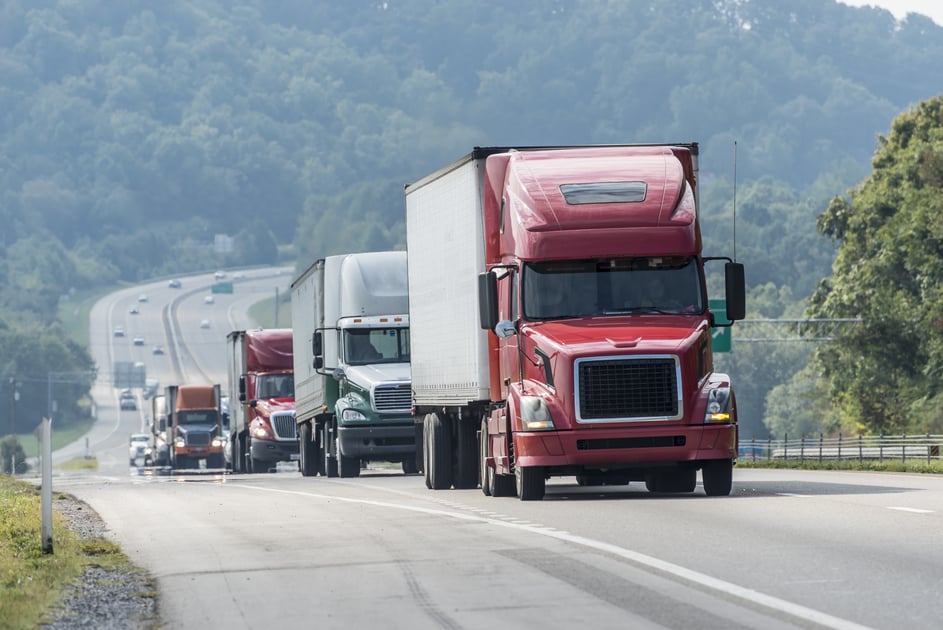
The majority of InTek’s freight business is moving loads for shippers needing either 53’ domestic intermodal or truckload capacity. While both freight modes offer the same cube, there are a few differences shippers should know, with the weight being the biggest issue.
Loading a truck more than it is legally allowed to be carried on the interstate is … well illegal. Public safety is number one and the Department of Transportation (DOT) takes its responsibility to ensure the roads are safe very seriously. So, if the load leaves your facility illegal, there is the potential of financial costs being levied for DOT fines; rework charges to make the load legal; delays in shipping on-time; and the possibility for huge lawsuits if the shipment that was loaded heavy were to be involved in a fatal accident.
With all that in mind, let’s go through how much can be loaded on the various types of semi truck freight moving on the interstates today.
The rule of thumb for each 53’ freight mode is what we have outlined below, but know there are exceptions to the rule which we will cover in more detail through this article.
Total Legal Cargo Weight for Truckers
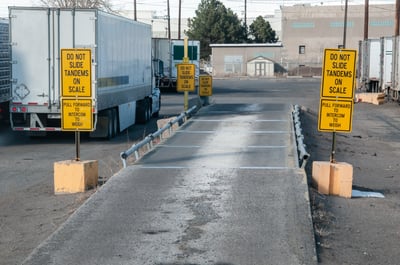 Dry Van Trailer: 44,000 to 45,000 pounds
Dry Van Trailer: 44,000 to 45,000 pounds- Intermodal: 42,500 pounds
- Refrigerated Reefer Trailer: 42,500 to 44000 pounds
- Flatbed Trailer: 48,000 pounds of cargo
The reason the answer depends is the total legal amount a carrier can weigh in transit on the interstate is 80,000, inclusive of tractor, trailer and cargo weight and all but the cargo weight is variable.
3 Variables that Impact Weight
The three variables that affect weight are the amount of fuel loaded, type of tractor and type of equipment.
Fuel
 The easiest of the three to cover is the amount of fuel loaded into the tractors diesel tanks.
The easiest of the three to cover is the amount of fuel loaded into the tractors diesel tanks.
Each gallon of diesel fuel weighs roughly 7 pounds and with each big rig having between 120 and 150 gallon capacity. This means the weight of a tractor’s fuel is between 840 and 1,050 pounds.
While this does not sound like much, it can be the difference in operating legally on the road, per the DOT legal requirement.
Semi Tractor
The next variable to discuss is the semi tractor itself. The two versions that we typically see on the road are: day cabs and sleepers.
Day cabs run about the same weight, with the variable being single or double axle.
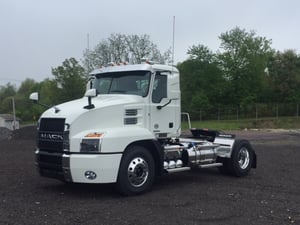
Semi tractor sleepers are heavier and have a little more variability in their total weight, which is dependent on the size of the sleeper and how it is outfitted.
Freight Equipment / Mode Type
The last area to discuss on the topic of weight is associated with the type of equipment used for the various freight modes.
Flatbeds are fairly easy to understand why they can be loaded much heavier than a dry van. They are made of lightweight aluminum. In addition to its aluminum construction, they do not have walls or a ceiling, thus reducing more weight from the equipment.
Dry vans, temp controlled reefer equipment and container-on-flatcar or COFC intermodal is where trouble typically comes into play for the less experienced dock worker. The reason is they all look very similar from the outside, but that is ends there.
A standard dry van typically can be loaded up to 44,000 to 45,000 pounds, where a temp controlled reefer can only be loaded between 42,500 and 44,000. The reason for the lower weight is because of the thicker walls lined with insulation and the refrigeration until used adds more weight to the trailer.
The reason for some variability in the dry vans and temp trailers is the construction methodology of various trailers can decrease the weight. Shippers can find a small contingent of light weight trailer capacity in the market that can load roughly 48,000 pounds. Motor carriers charge more for this capacity, but the overall cost per ton of freight moved will be less expensive because of the additional payload that can be put in transit. An example of an industry where lightweight trailers are often used is forest and paper products.
While there are a number of issues shippers need to be aware of when shipping intermodal versus truckload, the most common issue for shippers transitioning their freight from truckload to intermodal is loading the container to be legally compliant with gross weight and the distribution of weight across the vehicle.
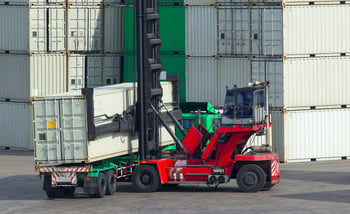 Both shippers and freight brokers find themselves in a world of hurt if they substitute intermodal capacity for what loaders expect to be a truckload request. The reason is the max payload for intermodal shipments is strictly 42,500 pounds and there are additional steps a shipper needs to do on loading an intermodal container to protect against load shifts that put the weight distribution into an illegal status, which we’ll cover next.
Both shippers and freight brokers find themselves in a world of hurt if they substitute intermodal capacity for what loaders expect to be a truckload request. The reason is the max payload for intermodal shipments is strictly 42,500 pounds and there are additional steps a shipper needs to do on loading an intermodal container to protect against load shifts that put the weight distribution into an illegal status, which we’ll cover next.
The reason intermodal can only be loaded to a max weight of 42,500 is the combination of a much more rigid container that the class I railroads double stack on wellcars, plus a heavy duty chassis is what increases weight for intermodal equipment.
Our most read article for the past several years, “Intermodal Weight: The Most Common Issue for Shippers” is an article we suggest shippers read to ensure they understand what is required to protect against weight issues they may be unfamiliar with as it relates to intermodal.
Weight Distribution
The next challenge with weight is its distribution across the various points of a trailer and tractor, which are outlined below.
- Steer axle: 12,000 pounds or 6,000 pounds per tire
- Drive axle tandems: 34,000 pounds or 4,250 pounds per tire
- Trailer tandems: 34,000 pounds or 4,250 pounds per tire.
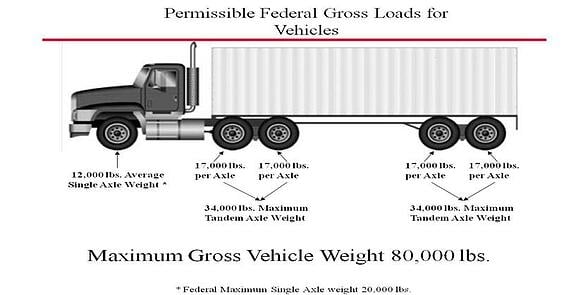
There are some exceptions to the distribution based on the distance between tandems. As an example, cases where the trailer axles are 10’ 2” apart each axle can weigh 20,000 pounds on the scales allowing for the trailer axles to weigh a total of 40,000 pounds compared to 34,000 pounds for closed tandem axles.
Other State Exceptions to Legal Cargo Weight
There are some state-by-state variations to the standards that allow shippers to load heavier based on the weight being distributed over additional axles.
Examples of variations to the DOT legal regulations include:
- Rocky Mountain Doubles – a tractor with two trailers: a long front trailer (usually 48 feet) followed by a shorter second trailer – maximum weight up to 129,000 pounds
- Turnpike Doubles – a tractor and two long (usually 48 feet) trailers – maximum weight up to 147,000 pounds
- Triples – a tractor and three short trailers (usually 28 feet) – maximum weight up to 110,000 pounds
- Michigan Octopodes – 8-axle double trailer combinations weighing up to 164,000 pounds.
Under this section we also want to share that California has bridge laws on the amount of weight that is allowed to run over them, so we recommend getting familiar with these regulations also.
Final Comment Payload Limits on Semi Tractor Freight
Again, the DOT takes the issue of legal weight of semi traffic seriously, as they and everyone should to ensure safe travel for commerce and citizens. So, if you should have further questions, please do not hesitate to reach out to us for more guidance.
For more on 53' domestic intermodal, truckload and managed transportation services, sign-up for our weekly blogs and visit the InTek Freight and Logistics website.
Get Updates
Featured Articles
Categories
- Freight & Shipping Costs (54)
- Freight Broker (60)
- Freight Forwarder (2)
- Intermodal Transportation (184)
- International & Cross Border Logistics (43)
- Logistics & Supply Chain (420)
- Logistics Service Provider (77)
- LTL (39)
- Managed TMS (49)
- News (39)
- Supply Chain Sustainability (12)
- Transportation Management System (37)
- Truckload (122)
- Warehousing & Distribution (50)





